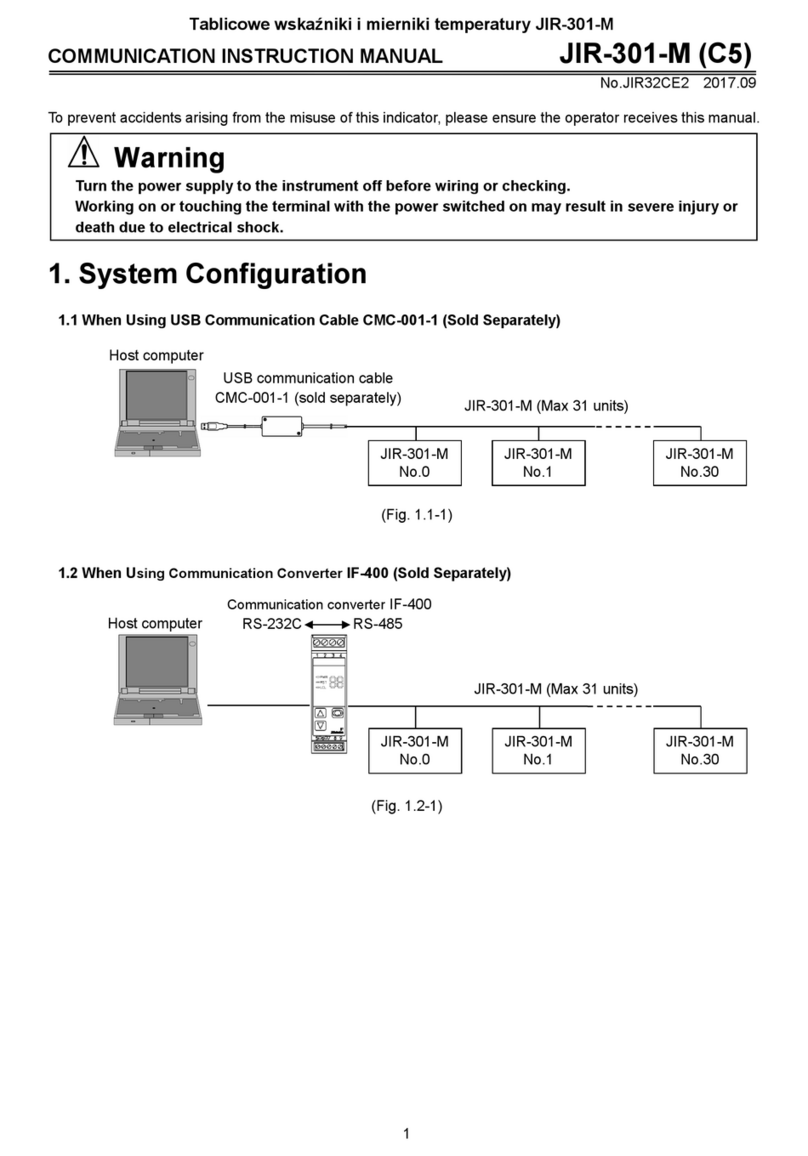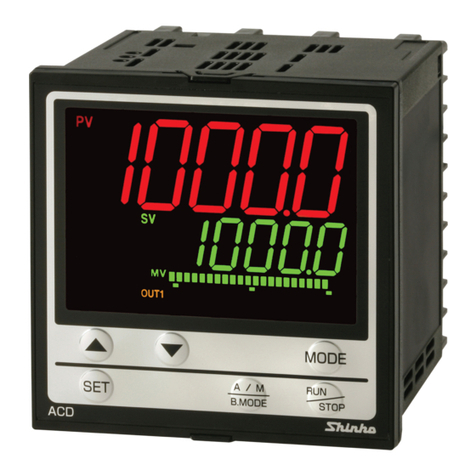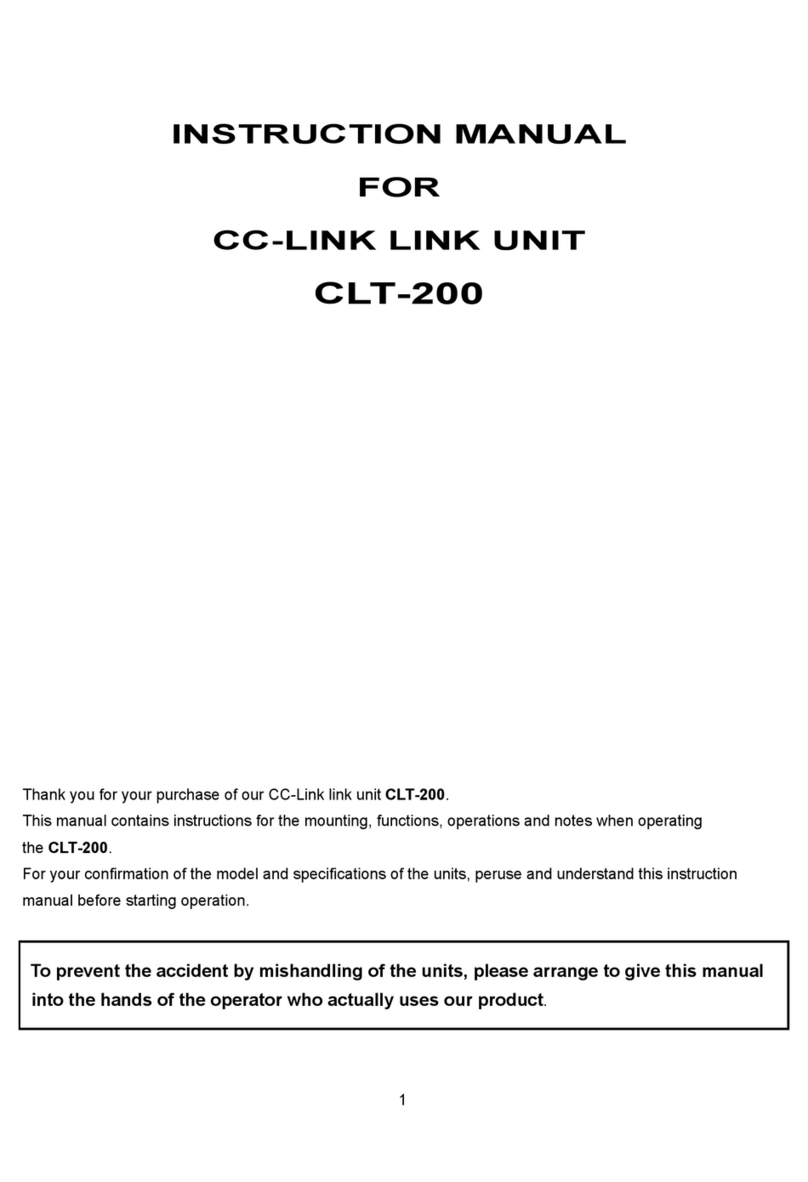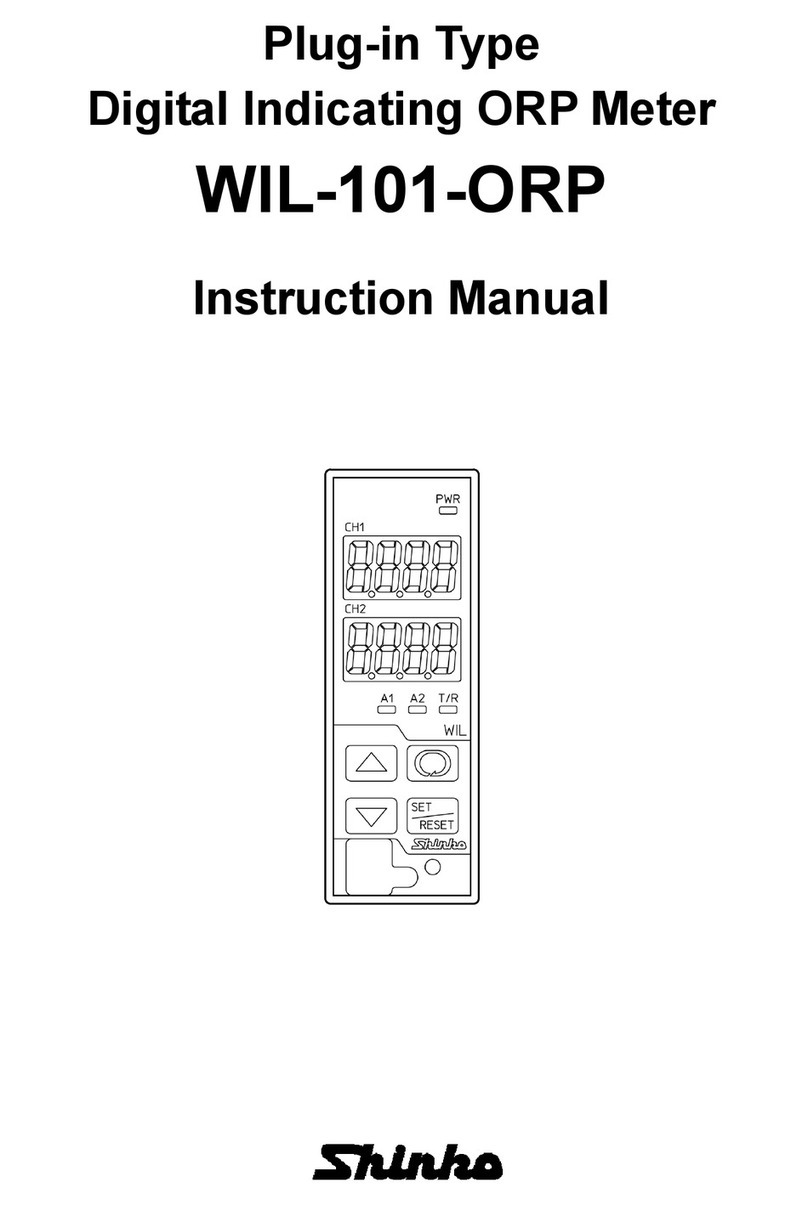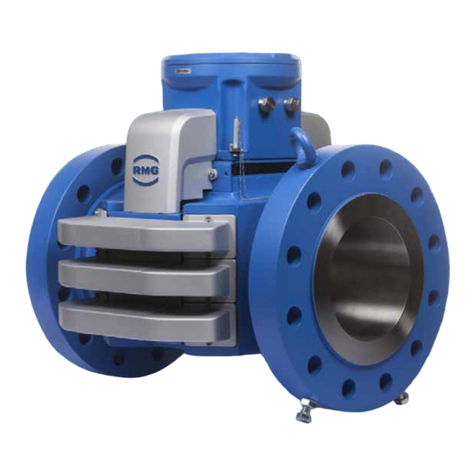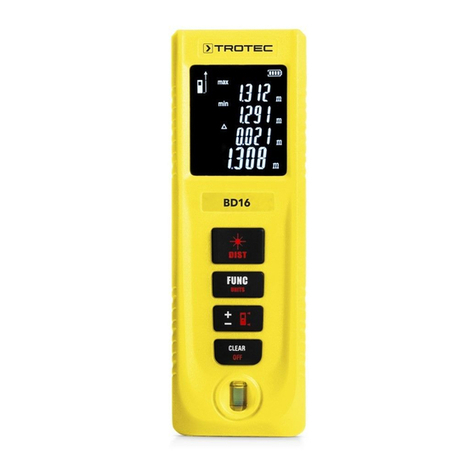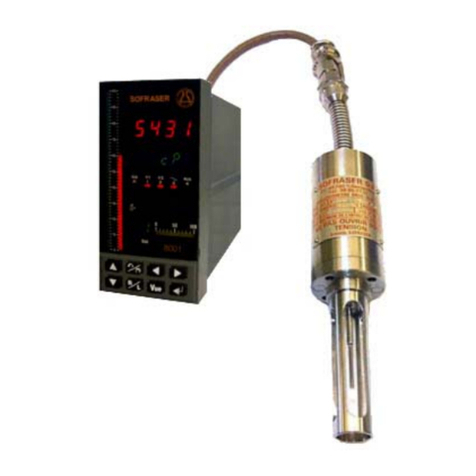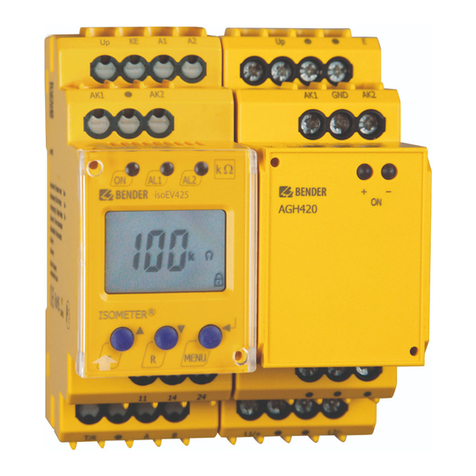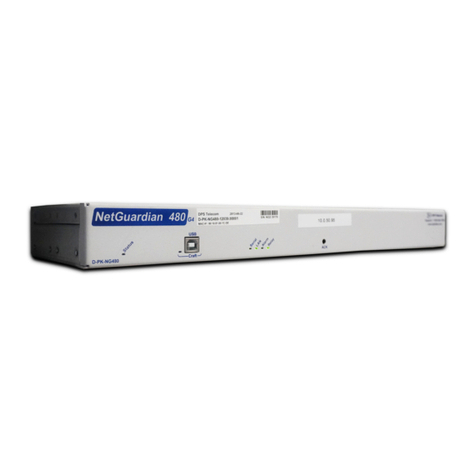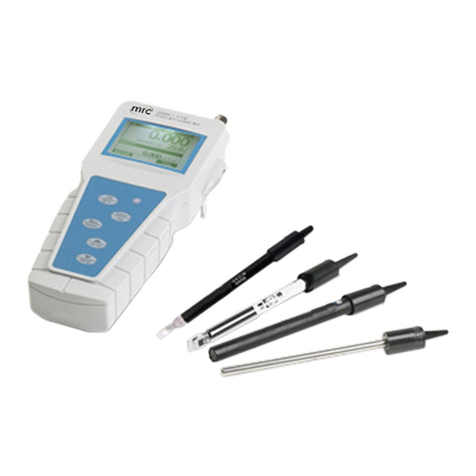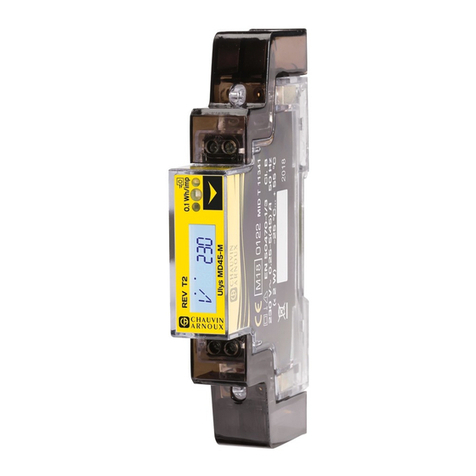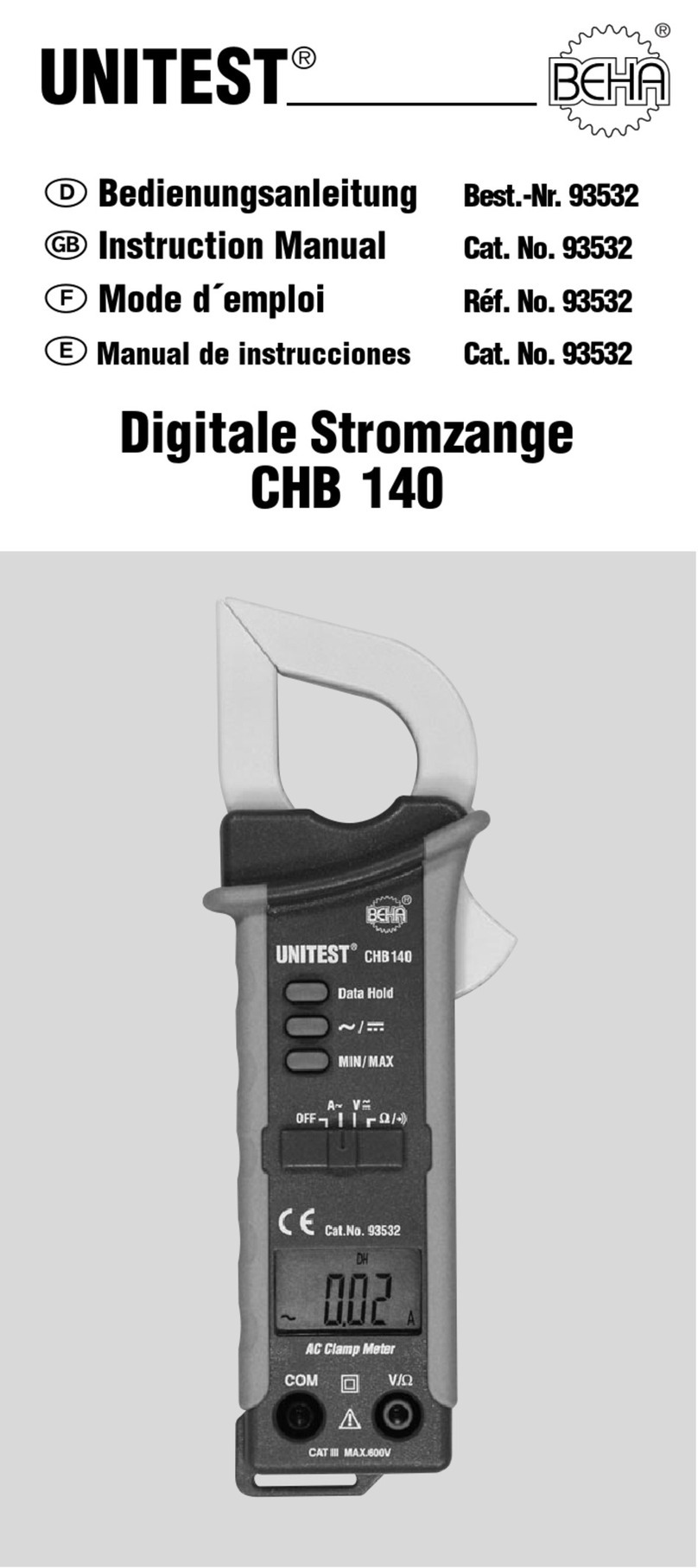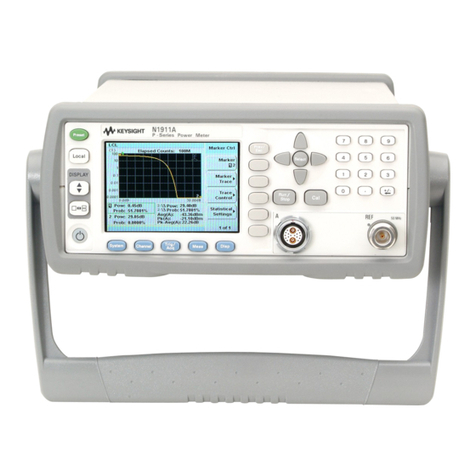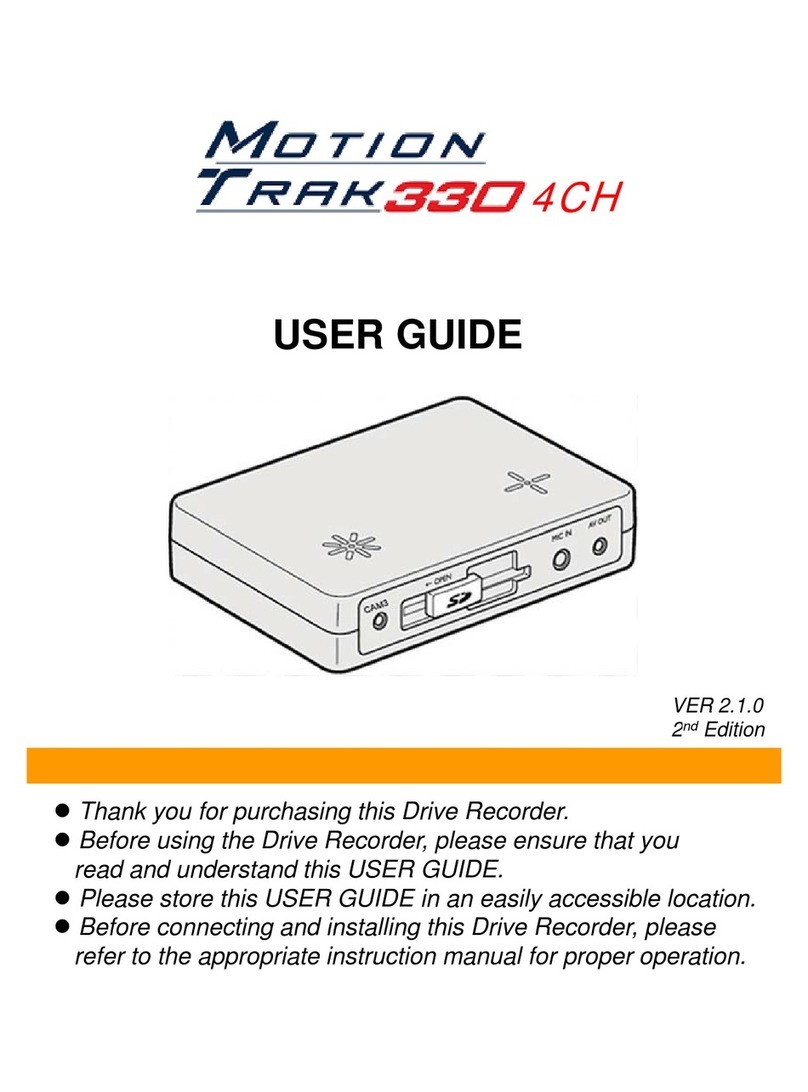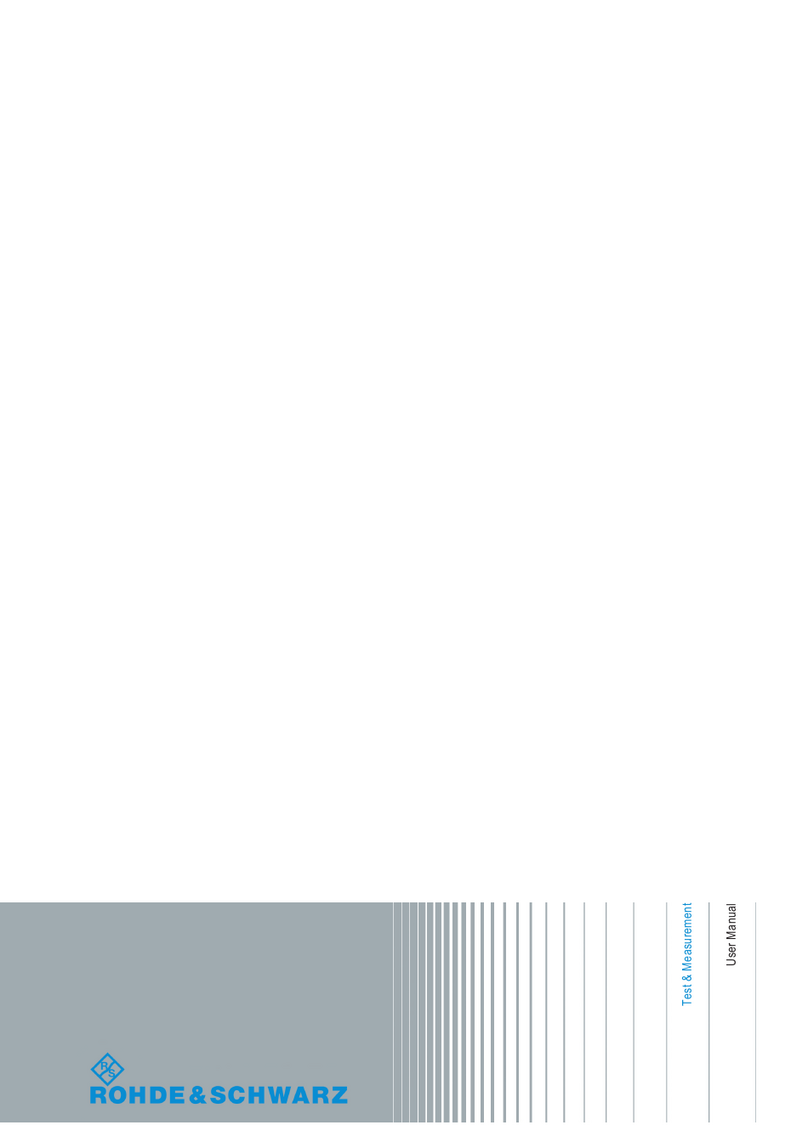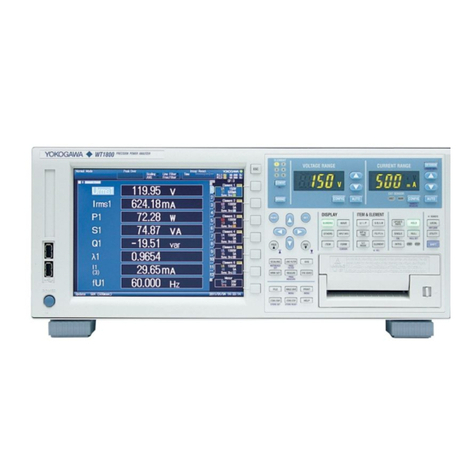Shinko JC-33A User manual

Instruction manual
JCS, R, D-33A (C5)
To prevent accidents arising from the misuse of this controller, please ensure the operator using it
receives this manual.
Warning
Turn the power supply to the instrument OFF before wiring or checking.
Working or touching the terminal with the power switched ON may result in
Electric Shock which may cause severe injury or death.
1. System configuration
RS-485 Multi-drop connection communication (Option: C5)
(Fig.1-1)
(Fig.1-2)
Wiring connection
When communication converter IF-300-C5 (RS-232C) is used
•Connector: D-sub connector 25-pin
Connection: RS-232C RS-485 (Data transfer rate: 2400, 4800, 9600, 19200bps)
(Fig.2-1)
RS-485
Host
computer
No.0
JC -33A
No.1 No.2 No.30
JC -33A JC -33A JC -33A
RS-485
RS-232C
Host
computer
232C
Communication
IF-300 485
No.0
converter
No.1 No.30
JC -33A JC -33A JC -33A
TXD
RXD
SG
FG
RTS
CTS
DSR
DTR
CD
2
3
7
1
4
5
6
20
8
Host computer
Shield wire
D-sub connecter 25-pin
COM
(6)
YA(-)
YB(+)
COM
RX
TX
COM
IF-300-C5
Built-in terminator 120
RS-232C RS-485
(2)
(1)
(11)
(4)
(5)
YA(-)
YB(+)
YA(-)
YB(+)
JCS-33A
COM
Shield wire
(13)
(14)
(15)
(13)
(14)
(15)

•Connector: D-sub connector 9-pin
Connection: RS-232C RS-485 (Data transfer rate: 2400, 4800, 9600, 19200bps)
(Fig.2-2)
Shield wire
Connect only one side of the shield wire to the FG or GND terminal so as not to allow current to
flow into the shield section.
If both sides of the shield section are connected to the FG or GND terminal, closed circuit will be
made between the shield wire and the ground.
As a result of this, current will run in the shield wire and the current may cause noise.
Never fail to ground FG or GND terminal.
Terminator
Do not connect terminator onto the communication line, because each of the JCS-33A, JCR-33A
and JCD-33A has a built-in terminator.
IF-300-C5 (sold separately) is available as a communication converter.
3. Setting the instruments
• It is necessary to set the instrument number individually to the instruments when plural
units are connected in serial communication (Option: C5).
Select the data transfer rate of the JC series in accordance with that of the host computer.
• Refer to the JCS-33A, JCR-33A and JCD-33A instruction manual as for instrument number setting
and transfer rate selection.
RXD
TXD
DCD
DTR
DSR
RTS
CTS
2
3
5
1
4
6
7
8
Host computer
D-sub connecter 9-pin
(6)
(7)
(8)
(14)
(15)
(16)
YA(-)
YB(+)
COM
RX
TX
COM
IF-300-C5
Built-in terminator 120
GND
RI 9
Shield wire
JCS-33A
RS-232C RS-485
Shield wire
(13)
YB(+)
YA(-)
COM
(14)
(15)
(13)
YB(+)
YA(-)
COM
(14)
(15)

4. Communication procedure
Communication starts with command transmission of the host computer (hereafter Master) and ends
with the response of the JCS-33A, JCR-33A and JCD-33A (hereafter Slave).
• Response with data
When the Master sends reading command, the Slave returns
the corresponding setting value or current action status as a
response.
• Acknowledgement
When the Master sends setting command, the Slave returns the
acknowledgement as a response after the processing is
terminated.
• Negative acknowledgement
When the Master sends non-existent command or value out of
the setting range, the Slave returns the negative acknowledgement.
• No response
When global address is set or either of framing error and checksum
is detected, the Slave will not respond to the Master.
(Fig.4-1)
Communication timing of the RS-485 (Option: C5)
Slave side;
When a slave starts transmission to RS-485 communication line, the JC series is arranged so as
to provide 1 character transmission period or more of idle status (mark status) before sending the
response to ensure the synchronization on the receiving side.
The JC series is arranged so as to disconnect the transmitter from the communication line
within the period of 1 character transmission after sending the response.
Master side (Notice of making a program);
Set the program so that the host computer can provide 1 character transmission period or more
of idle status (mark status) before sending the command to ensure the synchronization on the
receiving side when the host computer starts the transmission to RS-485 communication line.
Set the program so that the host computer can disconnect the transmitter from the communication
line within the period of 1 character transmission after sending the command in preparation for
reception of the response from the JC series.
To avoid the collision of transmissions between the host computer and the JC series,
send the next command after checking that the host computer received the response.
When the host computer communicates with the JC series through the line converter
(IF-300-C5), it is not required to manage the transmission timing described above,
because the converter takes the timing interpreting the protocol automatically.
5. Shinko protocol
5.1 Command configuration
All commands are written in ASCII. The data (setting value, decimal number) is converted to
Hexadecimal. ASCII is used for the command.
Negative numbers are represented by the 2's complement.
(1) Setting command
(Fig. 5.1-1)
Command
Data
Command
Acknowledgement
Command
Negative
acknowledgement
Command
No response
Master Slave
11 14 1241
Address
Command
type (50H)
Data
item
Checksum
Delimitter
(03H)
Header
(02H)
Sub
address
(20H)
Data
Number of
characters

(2) Reading command
(Fig. 5.1-2)
(3) Response with data
(Fig. 5.1-3)
(4) Acknowledgement
(Fig. 5.1-4)
(5) Negative acknowledgement
(Fig.5.1-5)
Header : Control code that represents the beginning of the command or response.
ASCII is used.
Setting command, Reading command : (02H) fixed
Response with data, Acknowledgement : (06H) fixed
Negative acknowledgement : (15H) fixed
Address : Numbers with which a master discerns slaves.
Instrument number 0 to 94 (20H to 7EH) and Global address 95 (7FH)
The numbers are used by giving 20H of bias, because 00H to 1FH are
used for control code.
95 (7FH) is called Global address, which is used when the same command
is sent to all the slaves connected. However, the response is not returned.
Sub address : (20H) fixed
Command type : Code to discern Setting command (50H) and Reading command (20H)
Data item : Data classification for the command object
Composed of hexadecimal 4 digits (Refer to the Communication command table.)
Data : The contents of Data (setting value) differ depending on the setting command
Composed of hexadecimal 4 digits (Refer to the Communication command table.)
Checksum : 2-character data to detect communication errors
Delimiter : Control code to indicate the end of command (03H) fixed
Error code : Indicates error type Composed of hexadecimal 1 digit
1 (31H)-----Non-existent command
2 (32H)-----Not used
3 (33H)-----Out of the setting value range
4 (34H)-----Status unable to set (e.g. AT is performing)
5 (35H)-----In setting mode by key operation
5.2 Checksum calculation
Checksum is used for detecting received command or data errors.
Make a program for the host computer side as well to calculate the checksum of the response
data from the slaves so that the communication errors can be checked.
The checksum range is from the address (instrument number) up to the character before the
checksum. Adding up all the character codes in the range, obtain 2’s complement to the total value,
and then describe it in hexadecimal number.
The lower 2-digit of the total value shown by the hexadecimal number is described by ASCII, that
is checksum.
●Checksum calculation example for setting the Main setting value: 600 (0258H)
11 14 121
Address
Command
type(20H)
Data
item
Checksum
Delimitter
(03H)
Header
(02H)
Sub
address
(20H) Number of
characters
11 14 1241
Address
Command
type(20H)
Data
item
Checksum
Delimitter
(03H)
Header
(06H)
Sub
address
(20H)
Data Number of
characters
11 12
Address
Checksum
Delimitter
(03H)
Header
(06H)
Number of
characters
11 2 11
Address
Checksum
Delimiter
(03H)
Header
(15H)
Error
code Number of
characters

with the Address (instrument number): 0 (20H) is shown as follows.
• 1’s complement: Make each bit of binary 0 and 1 reverse.
• 2’s complement: Add 1 to 1’s complement.
5.3 Command contents
Notice of setting and reading command
• Possible to set the setting value by setting command of the communication function
even if
the setting value is locked
• Even if the option is not applied, it is possible to set it by the setting command, however,
the contents of the command is ineffective.
• The setting value can be extended around 1,000,000 times before the memory expires.
If the number of setting times exceeds the limit, it cannot memorize data. So frequent
transmission via communication is not recommended.
• When connecting plural JC series, instrument numbers (address) must not be duplicated.
• When sending a command by Global address [95 (7FH)], the same command is sent to all the
slaves connected. However, the response is not returned to the Master.
• The instrument number and data transfer rate of the JC series cannot be set by communication.
Setting command
• The settable range is the same as the one in the case of key operation.
Refer to the communication command table of this manual as for communication command.
•All commands are written in ASCII.
• The data (setting value) is converted from decimal to a hexadecimal number, and ASCII is used.
Negative numbers are represented by 2's complement. When the data (setting value) has
a decimal point, use the whole number as response omitting decimal point.
Reading command
• All commands are written in ASCII.
• The data (setting value) is converted from decimal to hexadecimal number, and ASCII is used.
Negative number is represented by 2's complement. When the data (setting value) has
a decimal point, it returns the whole number with the decimal point omitted.
6. Modbus protocol
6.1 Transmission mode
There are 2 transmission modes (ASCII mode and RTU mode) in Modbus protocol.
[ASCII mode]
Hexadecimal (0 to 9,A to F), which is divided to MSD (4-bit) and LSB (4-bit) out of 8-bit binary
data in command is transmitted as ASCII characters.
STX ETX
P00010258
02H 20H 20H 50H 30H 30H 30H 31H 30H 32H 35H 38H 03H
[Characters above are represented by ASCII]
Checksum
Checksum calculation range
[e.g.]
E
45H 30H
0
20H
20H
50H
30H
30H
30H
31H
30H
32H
35H
38H
0010 0000
0010 0000
0101 0000
0011 0000
0011 0000
0011 0000
0011 0001
0011 0000
0011 0010
0011 0101
0011 1000
+
10 0010 0000
[Hexadecimal] [Binary]
1101 1111
1
+
1110 0000
E0
45H 30H
[1's complement]
[2's complement]
[Hexadecimal]
[ASCII]
Checksum

Data structure Start bit : 1 bit
Data bit : 7-bit
Paritybit : Even/ None/ Odd (Selectable)
Stopbit : 1 bit/ 2-bit (Selectable)
Error detection : LRC (Longitudinal redundancy check)
Data interval : 1 second or less
[RTU mode]
8-bit binary data in command is sent as it is.
Data structure Start bit : 1 bit
Data bit : 8-bit
Parity bit : Even/ None/ Odd (Selectable)
Stop bit : 1 bit/2-bit (Selectable)
Error detection: CRC-16 (Cyclic redundancy check)
Data interval : 3.5 characters transmission time or less
6.2 Message configuration
ASCII mode message is configured to start by [: (colon)(3AH)] and end by [CR (carriage return)
(0DH) + LF (Line feed)(0AH)]. (Fig. 6.2-1)
(Fig. 6.2-1)
RTU mode is configured to start after idle time processing more than 3.5 character transmission
time and end after idle time processing more than 3.5 character transmission time (Fig. 6.2-2)
(Fig. 6.2-2)
6.3 Slave address
Slave address is set within the range 0 to 95 by the individual instrument number of slave side.
The master identifies slaves by the slave address of the requested message.
The slaves inform the master which slave is responding to the master adding their own slave
address to the response message.
(Slave address 0, broadcast address can identify all the slaves. However slaves do not respond.)
6.4 Function code
The function code is the command code what action to take. (Table 6.4-1)
(Table 6.4-1)
Function code Contents
03 (03H) Reading setting value and information of slaves
06 (06H) Setting to slaves
Function code is used as a pointer whether it is a normal response (acknowledgement) or an error
(negative acknowledgement) when the Slave returns responsive message to the Master.
When acknowledgement is returned, original function code is returned with its response.
When negative acknowledgement is returned, MSD of the original function code with 1 is returned.
(For example, when the Master sends request message setting 10H to function code by mistake,
Slave returns 90H setting 1 to the MSD, because it is illegal function.)
For negative acknowledgement, abnormal code (Table 6.4-2) below is set to the data of response
message and returned to the Maser in order to inform it that what kind of error has occurred.
(Table 6.4-2)
Abnormal code Contents
1 (01H) Illegal Function (Non-existent function)
2 (02H) Illegal data address (Non-existent data address)
3 (03H) Illegal data value (Value out of the setting range)
17 (11H) Shinko error code 4 (Unsettable status)
18 (12H) Shinko error code 5 (During setting by key operation mode, etc)
6.5 Data
Data differs depending on the function code.
A request message from master side is composed of data item, number of data and setting data.
A response message is composed of number of bytes, data and abnormal code in negative
acknowledgement from slave side. Effective range of data is -32768 to 32767 (8000H to 7FFFH).
Slave
address
Function
code Data Error check
LRC
Delimiter
(CR)
Header
(:)
Delimiter
(LF)
3.5 idle
characters
Slave
address
Function
code Data Error check
LRC
3.5 idle
characters

6.6 Error check
Error check differs depending on the type of transmission mode.
[ASCII mode]
After calculating LRC (Longitudinal redundancy check) from slave address to data section,
calculated 8-bit data is converted to ASCII 2 characters and they are added to the end of data.
How LRC is calculated,
(1) Create a message in RTU mode.
(2) Add the start data (slave address) to the end of data. --X
(3) Complement X (bit reverse). --X
(4) Add 1 (X=X+1)
(5) Add X as an LRC to the end of the message.
(6) Convert the whole data to ASCII characters.
[RTU mode]
After calculating CRC-16 (cyclic redundancy checksum) from slave address to data section,
calculated 16-bit data is added to the end of data in the order of LSB and MSD
How CRC is calculated,
In the CRC system, the information to be transmitted is divided by a generating polynomial,
the resulting remainder being added to the data. The generation polynomial is as follows.
(X16 + X 15 + X 2 + 1)
(1) Initialize the CRC-16 data (assumed as X) (FFFFH)
(2) Exclusive logical sum (EX-OR) between data 1 and X X
(3) Shift X 1 bit to the right X
(4) When a carry is generated, take A001H and EX-OR. If not, go to 5. X
(5) Repeat (3) and (4) until shifting 8 times.
(6) EX-OR between the next data and X X
(7) Same as (3) to (5).
(8) Repeat up to the last data.
(9) Create a message in the sequence from lower to upper orders of the calculated 16-bit data (X).
6.7 Message example
[ASCII mode]
(1) Reading of the instrument number (address) 1 and SV
• A request message from the master side
(Fig. 6.7-1)
• A response message from slave side in normal status (When SV=100 )
(Fig. 6.7-2)
• A response message from slave side in abnormal status (When data item is mistaken)
(Fig. 6.7-3)
1 is set to the MSD of function code for response message in abnormal status. (83H)
An abnormal code (02H: Illegal data address) is returned as a content of error.
(2) Setting (Address 1, SV=100 )
• A request message from master side
Slave
address
Function
code Data item Error check
LRC DelimiterHeader
(01H) (03H) (0001H) (0001H)
Number of
data
(FAH) (CR・LF)(:)
12 2 4 4 2 2
Number of
characters
Slave
address
Function
code
Number of
response bytes
Error check
LRC DelimiterHeader
(01H) (03H) (02H) (0064H)
Data
(96H) (CR・LF)(:)
12224 22
Number of
characters
Slave
address
Function
code
Abnormal
code
Error check
LRC DelimiterHeader
(01H) (83H) (02H) (7AH) (CR・LF)(:)
12 2 2 4 2
Number of
characters
Slave
address
Function
code Data item Error check
LRC DelimiterHeader
(01H) (06H) (0001H) (0064H)
Data
(94H) (CR・LF)(:)
12 2 4 4 2 2
Number of
characters

(Fig. 6.7-4)
• A response message from slave side in normal status
(Fig. 6.7-5)
• A response message from slave side in abnormal status
(When a value out of the setting range is set.)
(Fig. 6.7-6)
1 is set to the MSD of function code for response message in abnormal status. (86H)
An abnormal code (03H: A value out of the setting range) is returned as a content of error.
[RTU mode]
(3) Reading (Address1, SV)
• Request message from the master side
(Fig. 6.7-7)
• Response message of slave side in normal status (When SV=100 )
(Fig. 6.7-8)
• Response message of slave in abnormal status (When data item is mistaken)
(Fig. 6.7-9)
1 is set to the MSD of function code for response message in abnormal status. (83H)
An abnormal code (02H: Illegal data address ) is returned as a content of error.
(4) Setting (Address 1, SV=100 )
• Request message from master side
(Fig. 6.7-10)
• Response message of slave in normal status
(Fig. 6.7-11)
• Response message in abnormal status (When a value out of the setting range is set)
(Fig. 6.7-12)
1 is set to the MSD of function code for response message in abnormal status. (86H)
An abnormal code (03H: A value out of the setting range) is returned as an content of error.
Slave
address
Function
code Data item Error check
LRC DelimiterHeader
(01H) (06H) (0001H) (0064H)
Data
(94H) (CR・LF)(:)
12 2 4 4 2 2
Number of
characters
Slave
address
Function
code
Abnormal
code
Error check
LRC DelimiterHeader
(01H) (86H) (03H) (76H) (CR・LF)(:)
1222 42
Number of
characters
3.5 idle
characters
Slave
address
Function
code Data item Error check
CRC
3.5 idle
characters
(01H) (03H) (0001H)
Number of
data
(0001H) (D5CAH)
11 2 2 2
Number of
characters
3.5 idle
characters
Slave
address
Function
code
Number of
response bytes
Error check
CRC
3.5 idle
characters
(01H) (03H) (02H)
Data
(0064H) (B9AFH)
11 1 2 2
Number of
characters
3.5 idle
characters
Slave
address
Function
code
Abnormal
code
Error check
CRC
3.5 idle
characters
(01H) (83H) (02H) (COF1H)
1112
Number of
characters
3.5 idle
characters
Slave
address
Function
code Data item Error check
CRC
3.5 idle
characters
(01H) (06H) (0001H)
Data
(0064H) (D9E1H)
11 2 2 2
Number of
characters
3.5 idle
characters
Slave
address
Function
code Data item Error check
CRC
3.5 idle
characters
(01H) (06H) (0001H)
Data
(0064H) (D9E1H)
11 2 2 2
Number of
characters
3.5 idle
characters
Slave
address
Function
code
Abnormal
code
Error check
CRC
3.5 idle
characters
(01H) (86H) (03H) (0261H)
1112
Number of
characters

7. Communication command table
When the data (setting value) has a decimal point, remove the decimal point and represent it as a
whole number, then describe the whole number in hexadecimal number.
Shinko standard
command type
Modbus
function code Data item Data
20H/50H 06H/03H 0001H: SV1 Setting value
20H/50H 06H/03H 0002H: Not used
20H/50H 06H/03H 0003H: AT setting 0: Cancel 1: Perform
20H/50H 06H/03H 0004H: OUT1 proportional band setting Setting value
20H/50H 06H/03H 0005H: OUT2 proportional band setting Setting value
20H/50H 06H/03H 0006H: Integral time setting Setting value
20H/50H 06H/03H 0007H: Derivative time setting Setting value
20H/50H 06H/03H 0008H: OUT1 proportional cycle setting Setting value
20H/50H 06H/03H 0009H: OUT2 proportional cycle setting Setting value
20H/50H 06H/03H 000AH: Not used
20H/50H 06H/03H 000BH: A1 setting Setting value
20H/50H 06H/03H 000CH: A2 setting Setting value
20H/50H 06H/03H 000DH: Not used
20H/50H 06H/03H 000EH: Not used
20H/50H 06H/03H 000FH: HB (Heater burnout alarm setting) Setting value
20H/50H 06H/03H 0010H: LA(Loop break alarm time setting) Setting value
20H/50H 06H/03H 0011H: LA(Loop break alarm span setting) Setting value
20H/50H 06H/03H 0012H: Setting value lock selection (*1) 0: Unlock 2: Lock 2
1: Lock 1 3: Lock 3
20H/50H 06H/03H 0013H: SV high limit setting Setting value
20H/50H 06H/03H 0014H: SV low limit setting Setting value
20H/50H 06H/03H 0015H: Sensor correction value setting Setting value
20H/50H 06H/03H 0016H: Overlap/ Dead band setting Setting value
20H/50H 06H/03H 0017H: Not used
20H/50H 06H/03H 0018H: Scaling high limit setting Setting value
20H/50H 06H/03H 0019H: Scaling low limit setting Setting value
20H/50H 06H/03H 001AH: Decimal point place selection 0: XXXX (No decimal point)
1: XXX.X(1 digit after decimal
point)
2: XX.XX(2 digit after decimal
point)
3: X.XXX(3 digit after decimal
point))
20H/50H 06H/03H 001BH: PV filter time constant setting Setting value
20H/50H 06H/03H 001CH: OUT1 high limit setting Setting value
20H/50H 06H/03H 001DH: OUT1 low limit setting Setting value
20H/50H 06H/03H 001EH: OUT1 ON/OFF action hysteresis
setting
Setting value
20H/50H 06H/03H 001FH: OUT2 action mode selection
0: Air cooling
1: Oil cooling
2: Water cooling
20H/50H 06H/03H 0020H: OUT2 high limit setting Setting value
20H/50H 06H/03H 0021H: OUT2 low limit setting Setting value
20H/50H 06H/03H 0022H: OUT2 ON/OFF action hysteresis Setting value
20H/50H 06H/03H 0023H: A1 action type selection (*2)
0024H: A2 action type selection (*2)
0: No alarm action
1: High limit alarm
2: Low limit alarm
3: High/Low limits alarm
4: High/Low limit range alarm
5: Process high alarm
6: Process low alarm
7: High limit alarm w/standby
8: Low limit alarm w/standby
9: High/Low limits alarm
w/standby
20H/50H 06H/03H 0025H: A1 action hysteresis setting Setting value

20H/50H 06H/03H 0026H: A2 action hysteresis setting Setting value
20H/50H 06H/03H 0027H: Not used
20H/50H 06H/03H 0028H: Not used
20H/50H 06H/03H 0029H: A1 action delayed timer setting Setting value
20H/50H 06H/03H 002AH: A2 action delayed timer setting Setting value
20H/50H 06H/03H 002BH: Not used
20H/50H 06H/03H 0036H: Not used
20H/50H 06H/03H 0037H: OUT/OFF selection 0: OUT
1: OFF
20H/50H 06H/03H 0038H: Auto/Manual control 0: Automatic control
1: Manual control
20H/50H 06H/03H 0039H: Manual manipulated variable Setting value
20H/50H 06H/03H 003AH: Not used
20H/50H 06H/03H 003FH: Not used
20H/50H 06H/03H 0040H:
A1 action Energized/Deenergized 0: Energized 1: Deenergized
20H/50H 06H/03H 0041H:
A2 action Energized/Deenergized 0: Energized 1: Deenergized
20H/50H 06H/03H 0042H: Not used
20H/50H 06H/03H 0043H: Not used
20H/50H 06H/03H 0044H: Input type selection 0: K [-200 to 1370 ]
1: K [-199.9 to 400.0 ]
2: J [-200 to 1000 ]
3: R [0 to 1760 ]
4: S [0 to 1760 ]
5: B [0 to 1820 ]
6: E [-200 to 800 ]
7: T [-199.9 to 400.0 ]
8: N [-200 to 1300 ]
9: PL- [0 to 1390 ]
10: C (W/Re5-26) [0 to 2315 ]
11: Pt100 [-199.9 to 850.0 ]
12: JPt100 [-199.9 to 500.0 ]
13: Pt100 [-200 to 850 ]
14: JPt100 [-200 to 500 ]
15: K [-320 to 2500 ]
16: K [-199.9 to 750.0 ]
17: J [-320 to 1800 ]
18: R [0 to 3200 ]
19: S [0 to 3200 ]
20: B [0 to 3300 ]
21: E [-320 to 1500 ]
22: T [-199.9 to 750.0 ]
23: N [-320 to 2300 ]
24: PL- [0 to 2500 ]
25: C (W/Re5-26)[0 to 4200 ]
26: Pt100 [-199.9 to 999.9 ]
27: JPt100 [-199.9 to 900.0 ]
28: Pt100 [-300 to 1500 ]
29: JPt100 [-300 to 900 ]
30: 4 to 20mA DC[-1999 to 9999]
31: 0 to 20mA DC[-1999 to 9999]
32: 0 to 1V DC [-1999 to 9999]
33: 0 to 5V DC [-1999 to 9999]
34: 1 to 5V DC [-1999 to 9999]
35: 0 to10V DC [-1999 to 9999]
20H/50H 06H/03H 0045H: Direct/Reverse action selection 0: Heating (Reverse action)
1: Cooling (Direct action)
20H/50H 06H/03H 0046H: Not used
20H/50H 06H/03H 0047H: AT bias setting Setting value
20H/50H 06H/03H 0048H: ARW (anti reset windup) setting Setting value
20H/50H 06H/03H 006FH: Key LOCK selection 0: Key enabled 1: LOCK
50H 03H 0070H:
Key operation change flag clearing 0: No action 1: All clearing
20H 06H 0080H: PV (input) value reading Present PV (input) value

20H 06H 0081H: OUT1 MV reading Setting value
20H 06H 0082H: OUT2 MV reading Setting value
20H 06H 0083H: Not used
20H 06H 0084H: Not used
20H 06H 0085H: OUT status reading 0000 0000 0000 0000
215 to 2
0
20digit: OUT1
0:OFF 1:ON
21digit: OUT2
22digit: A1output
0:OFF 1:ON
23digit: A2 output
0:OFF 1:ON
24digit: Not used (Always 0)
25digit: Not used (Always 0)
26digit: HB(Heater burnout alarm output)
0:OFF 1:ON
(When sensor burnout,0: OFF)
27digit: LA(Loop break alarm output)
0:OFF 1:ON
28digit: Overscale
0:OFF 1:ON
29digit: Underscale
0:OFF 1:ON
210 digit: OUT/OFF selection
211 digit: AT/ AT reset is active
0:OFF 1:ON
212 digit: OFF key selection
0:OFF 1:MANU
213 digit: Not used (Always 0)
214 digit: Auto/Manual control
0:Auto 1:MANU
215 digit: Key operation change
0:No1:Yes
20H 06H 0086H: Not used
20H 06H 0087H: Not used
20H 06H 00A0H: Not used
20H 06H 00A1H: Instrument info reading 0000 0000 0000 0000
215 to 2
0
20digit: Not used (Always 0)
21digit: Cooling function
0:No1:Yes
22digit: A1 function
0:No1:Yes
23digit: A2 function
0:No1:Yes
24digit: Not used (Always 0)
25digit: Not used (Always 0)
26digit: Heater burnout alarm
0:No1:Yes
27digit: LA (Loop break alarm)
0:No1:Yes
28to 215 digit: Not used (Always 0)
(*1) When Lock 3 is designated, the setting data is not saved in memory.
This is why the setting value reverts to the previous value before Lock 3 when power is turned OFF.
(*2) When alarm action type is changed, the alarm setting values reverts to the one when this instrument
is shipped and alarm output status is initialized too.
* Notice
When data setting is changed by key operation at the front panel of the instrument, the data
that is related to the changed item is also changed automatically as shown the example 1 below.
However, when the data setting is changed by communication function, the related data does not
change as shown the example 2 below. (Only the changed data changes.)

(Example 1) Main setting value high limit: 1370
Main setting value : 1000
Both main setting value high limit and main setting value are changed to 800
(Example 2) Main setting value high limit: 1370
Main setting value : 1000
Main setting value high limit is 800 but main setting value keeps the same temperature (1000 )
8. Specifications
Communication : Half-duplex
Data transfer rate : 9600bps (2400, 4800, 9600, 19200bps) Selectable by key operation
Synchronous system : Start-stop synchronous
Code form : ASCII
Error correction : Command request repeat system
Error detection : Parity check, Checksum
Dataformat Startbit: 1
Databit: 7
Parity : Even
Stopbit: 1
9. Troubleshooting
If any malfunction occurs, refer to the following items after checking if the power is supplied to the host
computer and the JC series.
• Phenomenon: If it is unable to communicate,
Check the following
The connection or wiring of communication is securely done.
Burnout or imperfect contact on the communication cable and the connector.
Data transfer rate of the JC series coincides with that of the host computer.
Whether the data bit, parity and stop bit of the host computer accord with those of the JC series.
The instrument number of the JC series coincides with that of the command.
The instrument numbers are duplicated in multiple JC series.
When communicating by RS-485 (option: C5) without IF-300-C5 (communication converter),
make sure that the program is proper for the transmission timing.
• Phenomenon: Though it is able to communicate, 'NAK' is responded.
Check the following
The command code is surely existent or not.
Whether the setting command exceeds the setting range or not.
In the case of the situation being unable to set (such as AT of JC series performing)
Whether the operation mode is under the setting mode by the key operation
• If you have any inquiries, please consult our agency or the shop where you purchased the unit.
No. JC3CE2 March 2002
SHINKO TECHNOS CO.,LTD.
OVERSEAS DIVISION
:
:
:
:
Reg. Office
Mail Address
URL
E-mail
2-48, 1-Chome, Ina, Minoo, Osaka, Japan
P.O.Box 17, Minoo, Osaka, Japan
http://www.shinko-technos.co.jp
Tel :
Fax:
81-727-21-2781
81-727-24-1760
When the main setting value high limit is
changed to 800 by key operation at the
front panel of the instrument.
When the main setting value high limit is
changed to 800 by communication
function
Table of contents
Other Shinko Measuring Instrument manuals
